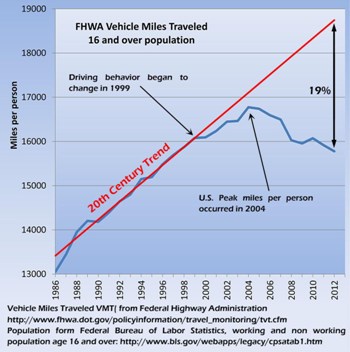Transportation Planning

Transportation
 Adequate transportation planning is a key part of the Hill Country’s future. Our growing population of residents must travel to and from work and school. Visitors travel our roads to enjoy the beauty of our landscape. If our roads are to remain the assets we enjoy today, transportation planning must consider not only mobility and safety, but also preservation of the historic, scenic and natural environment. We can do this by guiding development toward preferred growth corridors, such as those proposed by Envision Central Texas, by fostering compact growth near existing Hill Country communities and by using new planning tools like context sensitive design, which utilizes stakeholder input early in the planning process and strives to make infrastructure projects fit with the existing environment. Because of the significant effects transportation infrastructure has on growth patterns, it is important that Hill Country citizens be involved in transportation planning.
Adequate transportation planning is a key part of the Hill Country’s future. Our growing population of residents must travel to and from work and school. Visitors travel our roads to enjoy the beauty of our landscape. If our roads are to remain the assets we enjoy today, transportation planning must consider not only mobility and safety, but also preservation of the historic, scenic and natural environment. We can do this by guiding development toward preferred growth corridors, such as those proposed by Envision Central Texas, by fostering compact growth near existing Hill Country communities and by using new planning tools like context sensitive design, which utilizes stakeholder input early in the planning process and strives to make infrastructure projects fit with the existing environment. Because of the significant effects transportation infrastructure has on growth patterns, it is important that Hill Country citizens be involved in transportation planning.
Regional Context
Like so many challenges we face in the Hill Country, transportation is often dealt with in a silo rather from an overall regional perspective. Studies over the past 3 decades have consistently revealed the need for conservation and land protection in our most sensitive water resource areas. National trends show a growing market for more walkable communities and more transit options such as rail. This resource page provides links to modern transportation planning ideas, regional and approaches to long-term transportation solutions and current news about local transportation planning processes.
Must Read
The Growth Ponzi Scheme: We often forget that the American pattern of suburban development is an experiment, one that has never been tried anywhere before. We assume it is the natural order because it is what we see all around us. But our own history — let alone a tour of other parts of the world — reveals a different reality. Across cultures, over thousands of years, people have traditionally built places scaled to the individual. It is only the last two generations that we have scaled places to the automobile. Read more from Strongtowns.org.
Integrating Land Use and Transportation Planning through Placemaking: When considering integrated land use and transport planning, Placemaking promotes a simple principle: if you plan cities for cars and traffic, you get cars and traffic. If you plan for people and places, you get people and places. The power of this simple idea is that it reflects basic truths that are rarely acknowledged. One such truth is that more traffic and road capacity are not the inevitable results of growth. They are in fact the products of very deliberate choices that have been made to shape our communities around the private automobile. We have the ability to make different choices–starting with the decision to design our streets as comfortable places for people. Read more from Project for Public Spaces.
SH 45
One of the most talked about and contentious roadway proposals in the region has been SH 45. This outer-loop project is mapped directly over some of the most fragile, karst recharge features of the Edwards Aquifer. Some see the road as a traffic congestion solution, however a closer look reveals an increased traffic burden for Mopac which is already serving at maximum capacity. Public regional planning processes have recommended not building this project including Imagine Austin plan completed in 2012.
SH 45 Resources
- Community effort to educate the public about the consequences to Mopac if SH 45 is built
- A History of SH 45 proposals and rejections from 1984 through 2012
- Memo from Austin City staff recommending the SH 45 be deleted from the CAMPO plan
- Austin Water Quality Protection Plan presentation – Presentation illustrating ongoing programs to protect the very land that would be paved for this highway.
- Affordable solutions to SH 45 – Maps and Graphic supporting an affordable alternative approach to relieving traffic without SH 45 being built over sensitive water quality lands
Recent Transportation Planning News
Lots to lose
From Paved Paradise, which will be published next month by Penguin Press. The need for a perfect parking space has shaped the country’s physical landscape. It has become the organizing principle of American architecture, making our designs bigger, uglier, and farther...
You have all the parking you need—and it’s hiding in plain sight
Communities far and wide believe that they have a parking problem. This concern generally ranks as a top problem voiced in public meetings and shows up in master plans and visioning documents. Lack of parking creeps in as an excuse for declining or stagnant economic...
TxDOT central I-35 expansion project puts businesses at risk of displacement, loss of 625 jobs
The Texas Department of Transportation released the environmental impact statement (EIS) draft for its proposed Interstate 35 Capital Express Central project. The draft provides Central Texans their first look at how many residences and businesses could be impacted by...
Are you lonely? It’s not you, it’s the way we’ve built our nation
If you’re feeling lonely, you’re not alone. Loneliness is an increasingly common experience, and it can have severe consequences. People who feel lonely are at higher risk of serious health issues, including heart disease, immune deficiency and depression....
